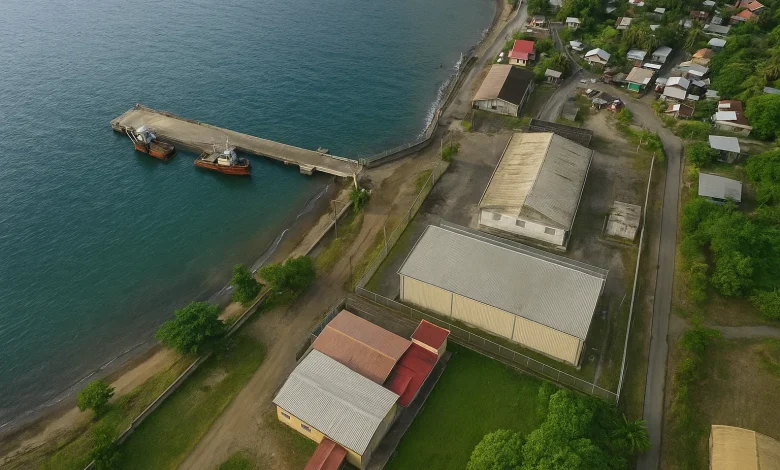Longhouse Jetty in Portsmouth

Longhouse Jetty in Portsmouth, also commonly styled Long House Jetty, is a seaport facility located on Dominica’s northwest coast, in the town of Portsmouth. It is one of Dominica’s designated ports of entry, alongside Woodbridge Bay Deep Water Harbour in Roseau and Anse du Mai Port, and plays a central role in maritime trade, security, and community life in the island’s second-largest town.
Geographic setting and infrastructure
The jetty lies along Prince Rupert’s Bay, one of the most expansive natural harbours in the Caribbean. This deep-water bay provides a sheltered anchorage, making Portsmouth historically attractive for shipping and trade. Longhouse Jetty itself is a concrete pier structure, designed to accommodate small to medium-sized cargo vessels and fishing boats. Its facilities include docking space, customs and immigration offices, and handling areas for goods, although on a smaller scale compared to Roseau’s Woodbridge Bay Deep Water Harbour.
Historical background
Portsmouth has long been considered for major port development because of the advantages of Prince Rupert’s Bay. During the colonial era, the British even attempted to relocate the capital from Roseau to Portsmouth, though the plans were abandoned due to health and environmental concerns. Longhouse Jetty became part of efforts in the late twentieth century to strengthen Portsmouth’s maritime capacity. While Roseau remained the primary commercial port, Longhouse allowed cargo and passenger services to expand in the north, reducing dependency on the capital.
Role in trade, fishing, and customs
As a port of entry, Longhouse Jetty operates under the Customs (Control and Management) Act and is staffed by customs and immigration officers. The jetty supports:
- Cargo handling – Small to medium shipments serving the northern districts, including imports of construction materials, food supplies, and agricultural inputs.
- Fishing activity – Local fishing fleets use the jetty for landings, contributing to Portsmouth’s role as a seafood supply hub.
- Customs and immigration – Provides inspection and entry clearance for vessels, ensuring the legal movement of goods and people.
- Maritime surveillance – Assists in monitoring Prince Rupert’s Bay for smuggling or drug trafficking, given the bay’s strategic location.
Contemporary significance
Today, Longhouse Jetty remains important for Portsmouth’s economy and for Dominica’s wider maritime security. Its role is especially vital to rural communities in the north, which rely on it for both trade and fishing. Though less developed than Roseau’s main port, it continues to symbolise Portsmouth’s historic importance as a maritime centre and its potential for future port development projects.




